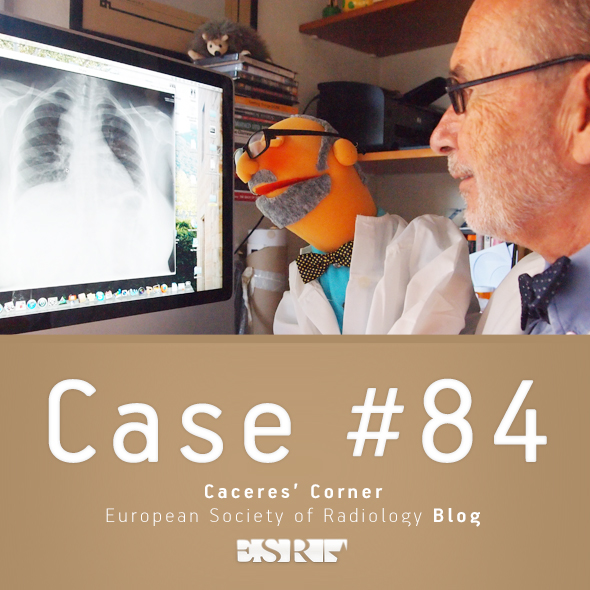
A-083 Bon appétit! Starters”: cystic fibrosis, pneumonia and pulmonary embolism
M.U. Puderbach | Friday, March 8, 08:30 – 10:00 / Room F2
CF: MRI is comparable to CT with regard to the detection of relevant morphological changes in the CF lung. Compared to CT, the strength of MRI is the additional assessment of “function”, i.e. perfusion, pulmonary haemodynamics and ventilation. In CF, regional ventilatory defects cause changes in regional lung perfusion due to the hypoxic vasoconstriction response or tissue destruction. Using dynamic contrast-enhanced MRI, these perfusion changes can be assessed. Pulmonary embolism: The current imaging reference technique in evaluation of acute pulmonary embolism is helical computed tomography. To be competitive with CT, an abbreviated MR protocol focusing on lung vessel imaging and lung perfusion may be accomplished within 15 min in-room time. As a first step, a steady-state GRE sequence acquired in two or three planes during free breathing enables a non-contrast-enhanced detection of large central emboli. As a second step, the protocol continues with the contrast-enhanced steps including first pass perfusion imaging, high spatial resolution contrast-enhanced (CE) MRA and a final acquisition with a volumetric interpolated 3D FLASH sequence in transverse orientation. Pneumonia: The potential of MRI to replace chest radiography, particularly in children, was already investigated several years ago. The experience from this work may be considered valid for the suggested protocols for 1.5-T scanners since image quality has significantly improved. Therefore, T2-weighted fat-suppressed as well as dynamic contrast-enhanced T1-GRE sequences are applied with a slice thickness between 5 and 6 mm. Disease entities encompassing community-acquired pneumonia, empyema, fungal infections and chronic bronchitis are detectable.

Dear Friends,
I am back with radiographs of a 63-year-old woman with malaise and low-grade fever. Check the images below and leave me your thoughts and diagnosis in the comments section. Come back on Friday for the answer.
Diagnosis:
1. Carcinoma of the lung
2. Pneumonia
3. Thymoma
4. None of the above
Read more…

A-618 C. Cystic fibrosis and other bronchiectatic diseases
M.U. Puderbach | Monday, March 11, 16:00 – 17:30 / Room I/K
Several different diseases go along with the development of bronchiectasis. Bronchiectasis may result from chronic infection, proximal airway obstruction, or congenital bronchial abnormality. In cystic fibrosis, bronchiectasis is one of the key features of lung involvement. Bronchiectasis can present with a variety of non-specific clinical symptoms, including hemoptysis, cough, and hypoxia. Bronchiectasis is defined as localized or diffuse irreversible dilatation of the cartilage-containing airways or bronchi. The imaging gold standard for bronchiectasis is thin-section CT. Morphologic criteria on thin-section CT scans include bronchial dilatation with respect to the accompanying pulmonary artery (signet ring sign), lack of tapering of bronchi, and identification of bronchi within 1 cm of the pleural surface. Bronchiectasis may be classified as cylindric, varicose, or cystic, depending on the appearance of the affected bronchi. It is often accompanied by bronchial wall thickening, mucoid impaction, and small-airways abnormalities. Besides CT, nowadays MRI of the lung is able to image the relevant morphological features of bronchiectasis. In addition, functional changes due to bronchiectasis can be studied.

Dear Friends,
Dr. Pepe refuses to leave Mexico and I have to go there to bring him back. I have asked my friends Jose Vilar and Marisa Domingo to cover for me and present this week’s case. The radiographs below belong to an 18-year-old woman with recurrent haemoptysis.
Leave your thoughts and diagnosis in the comments section and come back for the answer on Friday.
Diagnosis:
1. Arteriovenous malformation
2. Hypoplasia of left lung
3. Vasculitis
4. None of the above
Read more…

Dear Friends,
Dr. Pepe is still in Mexico, drinking tequila and enjoying mexican hospitality. He refuses to come back and asked me to cover for him. Radiographs belong to a 59-year-old male with fever. Had a similar episode two years ago which cleared with antibiotics.
Diagnosis:
1. Reactivation TB
2. Pneumonia
3. Carcinoma
4. None of the above
Read more…

Dear Friends,
Muppet and I are going to Mexico for a week. When back, we expect all of you to have clinched the diagnosis of this 58-year-old male with chest pain.
Leave your thoughts and diagnosis in the comments section below and come back on Friday for the answer.
Diagnosis:
1. Metastatic disease
2. Pulmonary infarct
3. Mesothelioma
4. None of the above
Read more…

Dear friends,
Today I am presenting radiographs and CT of a 27-year-old male with fever and malaise. Leave me your thoughts and diagnosis in the comments section and come back on Friday for the answer.
Diagnosis:
1. Teratoma
2. Thymoma
3. Lymphoma
4. None of the above
Read more…

Dear Friends,
Since I am an old codger, I am only allowed to look at pre-op chest films. As one young member of staff told me: you may be better than us, but we are faster because we read all of them as normal!
Today I am showing two pre-op chests. Would you read them as normal? If not, what do you see? Leave your comments below and come back for the answer on Friday.
Read more…

Dear Friends,
The first case of 2014 belongs to a 40-year-old male with a mild cough. What would you suspect?
1. Tuberculosis
2. Carcinoma
3. Enlarged left pulmonary artery
4. None of the above
Check out the images below and leave your thoughts and diagnosis in the comments section.
Read more…

Dear Friends,
Muppet believes that the last week of the year deserves an unusual case. Images belong to a 61 year-old woman with frank haemoptysis for one week.
What would you say about the LLL lesion? Leave your thoughts and diagnosis in the comments section and come back on Friday for the answer.
Read more…









